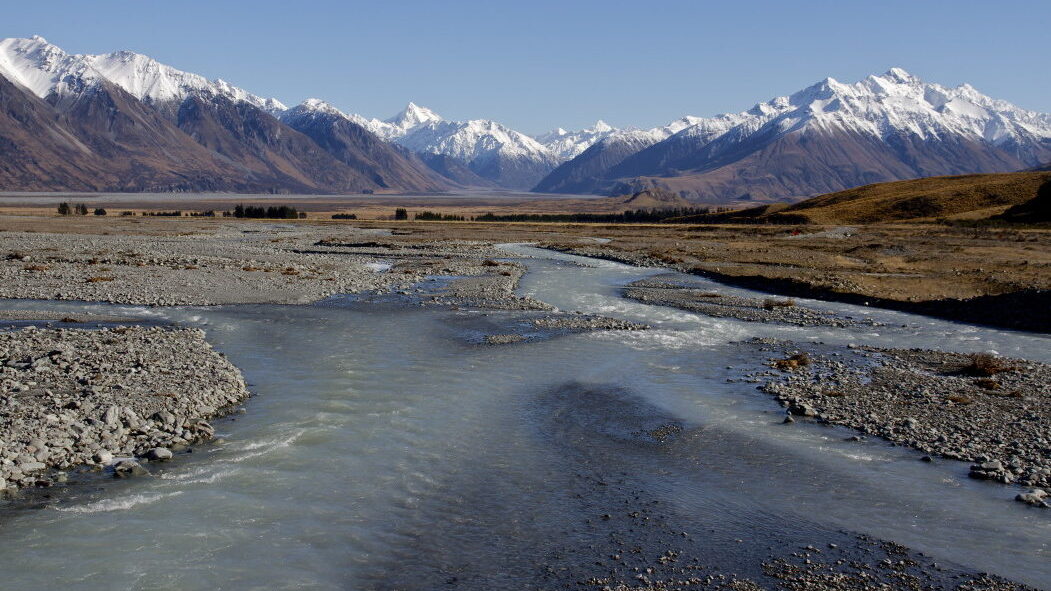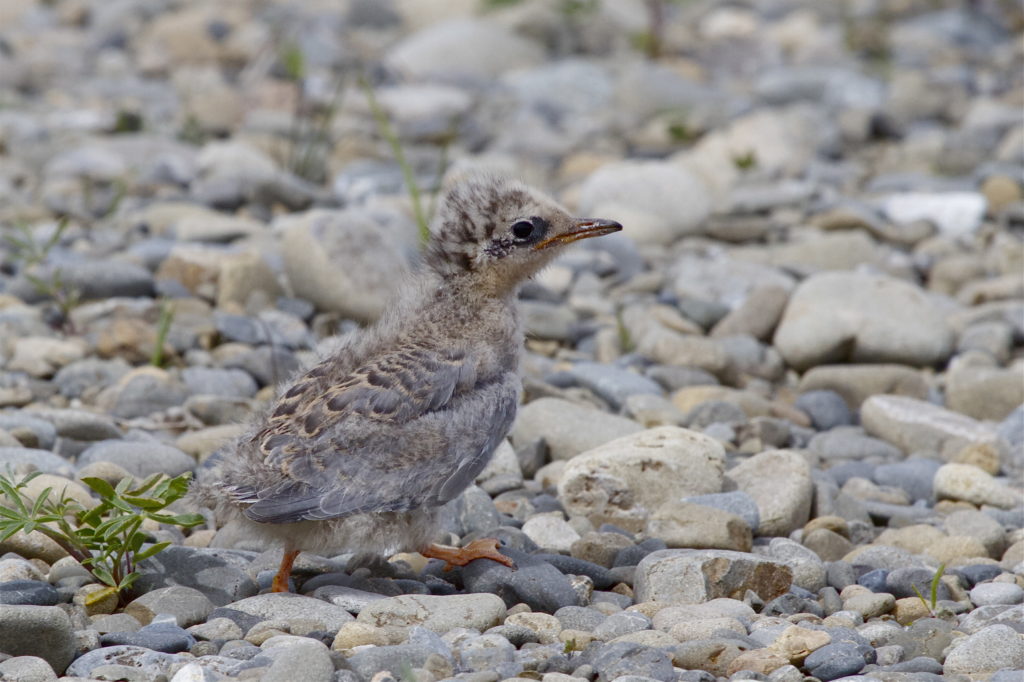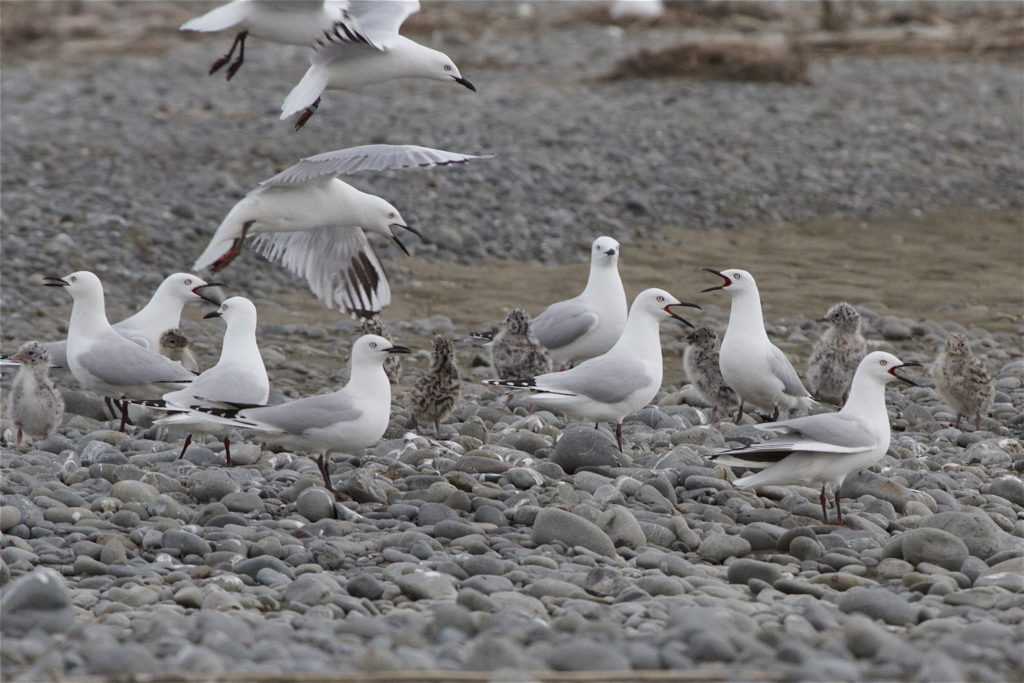The South Island’s stunning braided river systems have been formed over millions of years as clashing tectonic plates created mountains and glaciers and then high rainfall and melting snows washed away at the mountain rock, sweeping gravel down into the valleys and coastal plains. In between rainstorms and spring snow melts, the river flow reduced and islands of loose shingle formed, surrounded by a weaving network of shallow river channels.

It’s a process that continues today and it creates a characteristic river network seen in Southland and Canterbury in particular. Wading birds including dotterels, terns, wrybills (with their sideways-bent beaks), black-billed gulls (the most endangered gulls in the world) and the very rare black stilt have all adapted to breed in this very specialised habitat, carefully choosing nest sites just above the flood line and laying well-camouflaged eggs among the river stones.
Their eggs and cryptically coloured chicks are well protected from aerial predators. Although the occasional high river level has always been a nesting risk, the safety and abundant food offered by the river braids must have historically balanced out the risks.

Then along came mammalian predators. With a strong sense of smell, they’re less reliant on sight to find their prey and are less easily fooled by camouflage. The river braids still offer some protection, but introduced weeds are clogging up the riverbeds. Irrigation and hydropower generation are potentially messing with the river flows. Not only the river wildlife, but the braided river system itself, is threatened by a suite of troublesome mammals that includes humans.
In 2006, a group of concerned individuals from all over the South Island came together to form BRaid (Braided River aid) – an incorporated society that, by acting as an umbrella group, aims to protect, enhance and restore braided river systems. The group assists with setting up river care groups, helps out with spring river bird surveys, monitors the breeding success of nesting colonies and works with stakeholder groups, recreational and commercial river users to identify and manage the rivers and bird breeding areas.
BRaid also provides guidance on braided river predator control programmes where the open environment and changing river patterns means that predator and prey behaviour can be very different to that found in more thoroughly studied forest environments. Some of the challenges are created by the birds themselves which may choose different sites – or even completely different rivers – for their nesting colonies from one year to the next.
Sonny Whitelaw, manager for BRaid, says that the group has recently received funding to develop the Braided Rivers Partnership Programme. The programme is supported by Environment Canterbury and funded by the Department of Conservation and the Department of Internal Affairs.
“We are asking people who live, work and play around braided rivers to report sightings of black-billed gulls (critically endangered) and black-fronted terns (endangered), when the birds start to nest in September. They do not always nest in the same place or even the same river from year to year, so just an email (ideally with a photo) letting us know where the birds have started to nest would be a huge helping developing a management strategy to stop them plunging into extinction”.

There is also some funding available to assist those who are keen to help with trapping, Sonny says. “We have funding to supply traps to individuals and groups who may be interested in placing a protective trapping cordon around these colonies. If you are already involved in a trapping programme near a river and you see these birds, a slight adjustment to your current programme could be of enormous benefit – and we’ll supply additional traps at no cost.”
BRaid also aims to raise public awareness of braided rivers and their uniquely adapted birds. “We have new brochures and 4,500 credit-card sized fridge magnets for distribution,” Sonny says.
There are 1500 each of three birds: black-fronted terns, black-billed gulls, and wrybill.
“The goal is to have a set of these magnets in households and businesses along braided rivers everywhere.” Sonny is looking for others involved in conservation work to help distribute them. “They make great giveaways at school talks!”
The organisation also delivers braided river conservation management courses. A free workshop, scheduled for Tuesday 31 May is already booked out, but Sonny advises anyone keen to go to put their name down on a waiting list in case there are cancellations. The workshop will be held at the Lincoln Events Centre and includes speakers from DOC, Landcare Research, Lincoln, Canterbury and Otago Universities, Environment Canterbury, ecology consultants and community conservation groups.

